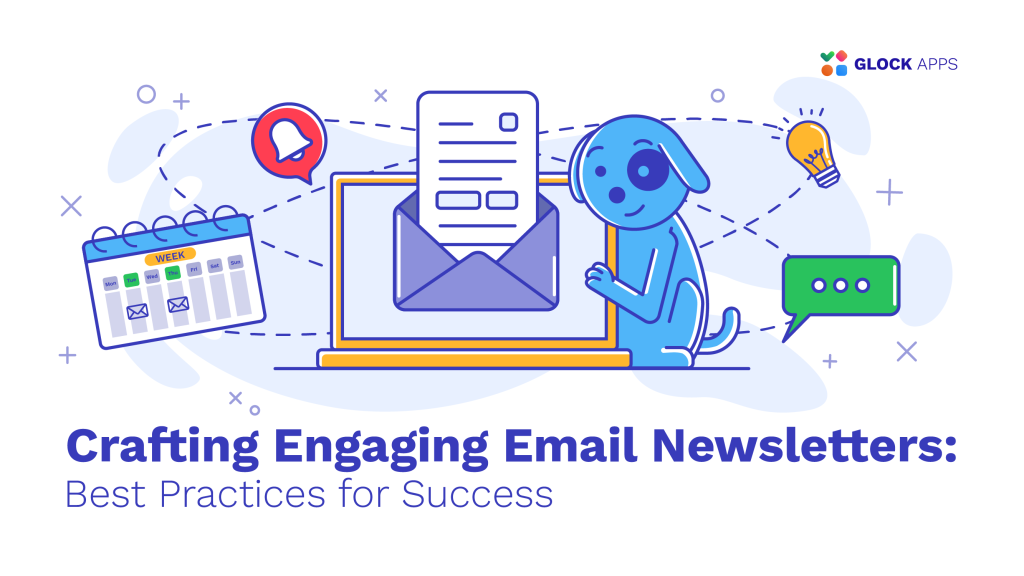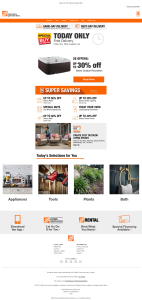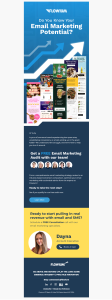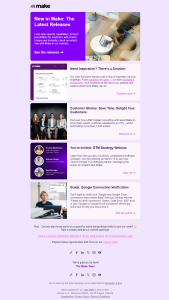Crafting Engaging Email Newsletters: Best Practices for Success

Why Are Newsletters Important?
Customers always appreciate it when a company shares quality information about its offers, services, and updates through timely online newsletters. This method of communication has numerous advantages, including helping to increase website traffic with embedded links, keeping subscribers happy and informed in advance, providing direct advertising opportunities, and the ability to regularly stay in the user’s field of view.
If you’re in the process of creating an email newsletter for your customers, follow our best practices to take your content to the next level.
How Do Newsletters Benefit Businesses?
Newsletters benefit businesses in several ways. They help increase brand awareness, drive website traffic, and generate leads. Additionally, newsletters allow companies to showcase their expertise, build customer trust, and promote their products or services.
The newsletter is almost the most popular type of email campaign, that’s why, with its help, businesses can talk to the client on topics that are beneficial to them, offering to buy goods or provide relevant services. And finally, the newsletter is very convenient for both parties, the brand and the buyer, everyone wins here.
It also plays a crucial role in customer retention by keeping them informed and engaged. Regular communication through newsletters helps to keep buyers notified and encourage them to make repeat purchases, as well as provide an opportunity to offer exclusive offers or promotions to loyal clients.
Email Newsletter Statistics
Are email newsletters still effective? Obviously yes, it remains a potent tool in the email marketing arsenal. Let’s back it up with convincing statistics:
1. 73% of B2B marketers use email newsletters to distribute their content, according to the Content Marketing Institute research.
2. GetResponse analyzed nearly 7 billion messages from approximately 30 billion email senders with at least 500 contacts who sent emails during the year 2022 and found out which type of email works best. Third place went to the newsletter with an average opening rate of 26.7%. Newoldstamp’s research shows how important email is in daily life, with 77.7% of people checking their email more than five times a day. Checking habits do vary, though: 14.9% check 2-4 times daily, 7.2% once a day, and 2.2% only every few days.
Data from the same research on the right email frequency to potentially increase conversions showed that companies that send 1 newsletter per week had 38.21% opens, 3.44% clicks, 9% click-to-open rate, 0.21% unsubscribe, 0.01% compliant, 2.77% bounce rate. The total percentage of marketers classically sending only one weekly email newsletter was 46.19%.3. According to the 2023 Email Marketing Statistics by Constant Contact, the newsletter was one of the two key players next to the welcome letter among the different types of emails sent by marketers, accounting for 81%.
Email Newsletter Best Practices
Surely there is no person in today’s world who doesn’t know what email newsletters are? Yes, those regular updates from your favorite brands that pop up in your inbox when you least expect it, whispering: “Hey, remember us? We have something exciting to share!”. And it makes sense, so the main purpose of newsletters is to inform, engage, and connect with a target audience.
Want to create something worthwhile? Follow these useful best practices before you hit the send button:
1. Expand Your Visual Experience with Competitors Research and Analysis.
When creating your newsletter, it is important to start with a thorough analysis of examples of direct competitors and other famous companies in your niche. It is better to take the time to first find out what others are doing with newsletters in your industry than to lose them in customers’ inboxes. By carefully examining the content, design, and sending frequency of other market players, you gain valuable insights into what works and what doesn’t.
How do they engage their audience and what strategies seem to be working? By understanding your competitors’ approaches, you can identify opportunities to differentiate your newsletter and offer unique value to your subscribers.
Keep an eye on your competitors’ newsletters to stay on top of industry trends. This will help ensure that your newsletter remains relevant and competitive in today’s fast-paced world. Continually expand your visual experience and taste, it may seem appropriate only for designers, but you may not doubt that it is just as important for email marketers to be able to work with the visual part of their campaigns.
2. Understand Audience Interests and Coverage Areas for Content.
The next step is to understand the main areas of information to cover in your niche. Have you identified key themes and topics of interest to your target audience? Consider the main interests, pain points, and questions your followers may have in your industry or niche. Are there specific trends, developments, or challenges that require regular coverage in your newsletter?
Identify key areas of information and ensure your content remains relevant and valuable to your readers. Also, consider including different types of content such as tutorials, guides, informative articles, industry insights and news, tips and tricks, and case studies to provide a well-rounded experience for your subscribers. Offer diverse coverage that addresses different aspects of your niche to keep your audience engaged and informed.
3. Consider the Format of Copy and Content.
Don’t waste your readers’ time, write a concise copy to make it easy to read. Also not to be boring and entertain them, include videos, infographics, gifs, memes, and interactive elements in your newsletter, not just blog posts. How about incorporating user-generated content, customer testimonials, and success stories to add authenticity and credibility to your newsletter? Experiment with different layouts, such as single-column or multi-column designs, to optimize readability and visual appeal.
Regarding the balance of images and text, the standard recommendation for email structure is the “60/40 rule”, which means a minimum of 60% text and a maximum of 40% images. Better avoid creating image-heavy or image-only emails, so that it does not end up in the spam folder. Some email clients block images by default, and users may block pictures to save on data usage. So by relying solely on images to convey your message, you risk your subscribers missing out on something interesting if your photos and illustrations aren’t uploaded. To ensure accessibility, add descriptive alt text to your graphics and style them accordingly for an aesthetic look.
Test several options and carefully analyze the main email marketing and deliverability metrics, then focus your attention on creating the most interesting ones. With a variable content format, you can cater to different preferences and capture the attention of your subscribers more effectively.
4. Make It Mobile-Friendly.
Your email will most likely be opened on a smartphone. Therefore, from the very beginning, think about how to make your e-newsletter convenient for mobile devices. With everyone glued to their phones, email marketers are moving to a mobile-first approach.
But what does that mean? Well, it’s about creating emails that look great on smartphones first and then making sure they still look well on desktops. Because by giving mobile users a good customer experience, we aim to get more clicks and engagement. So, it’s best to keep your newsletter simple and mobile-friendly. Trust us, your followers will thank you! And remember, details like a well-designed iPhone mail signature can make your message look polished and professional across all devices.
5. Choose Your Call-to-Action Wisely.
It is logical that when creating each of your newsletters, you should think about what you want from your readers. Are you just sharing information or hoping they will take action? How and where you place your call to action (CTA) matters. A hidden CTA at the bottom won’t grab the same attention as one front and center.
To increase engagement, use clear wording and don’t leave your readers guessing. Tell them exactly what to expect when they click: something to read, download, receive as a gift, sign up, and so on. Keeping your text simple, without guesswork “click here”, can significantly improve your email conversions.
Make the decision-making process easier for your customers by selecting one primary CTA and the rest as optional, and watch those clicks come.
Stay informed! Don’t miss the newsletter from GlockApps and get the latest industry insights and useful updates!
Wrapping Up
Creating visually aesthetic email newsletters while still being functional and user-friendly can be quite challenging for marketers, given the need to capture recipients’ eyes while also driving them to engage and convert. Learn and adopt our best practices to improve your e-newsletter and make it something your customers look forward to.
Brand Newsletters Examples
To train your eye and taste, see the best examples of successful newsletters our team has collected for you, which clearly show how different approaches to writing and illustrating emails can be. Select the tips you should follow when creating a newsletter, choose trendy templates, get inspiration, and craft your great content.
You can take a closer look at these samples by enlarging them or using the share button to download them full size.




















